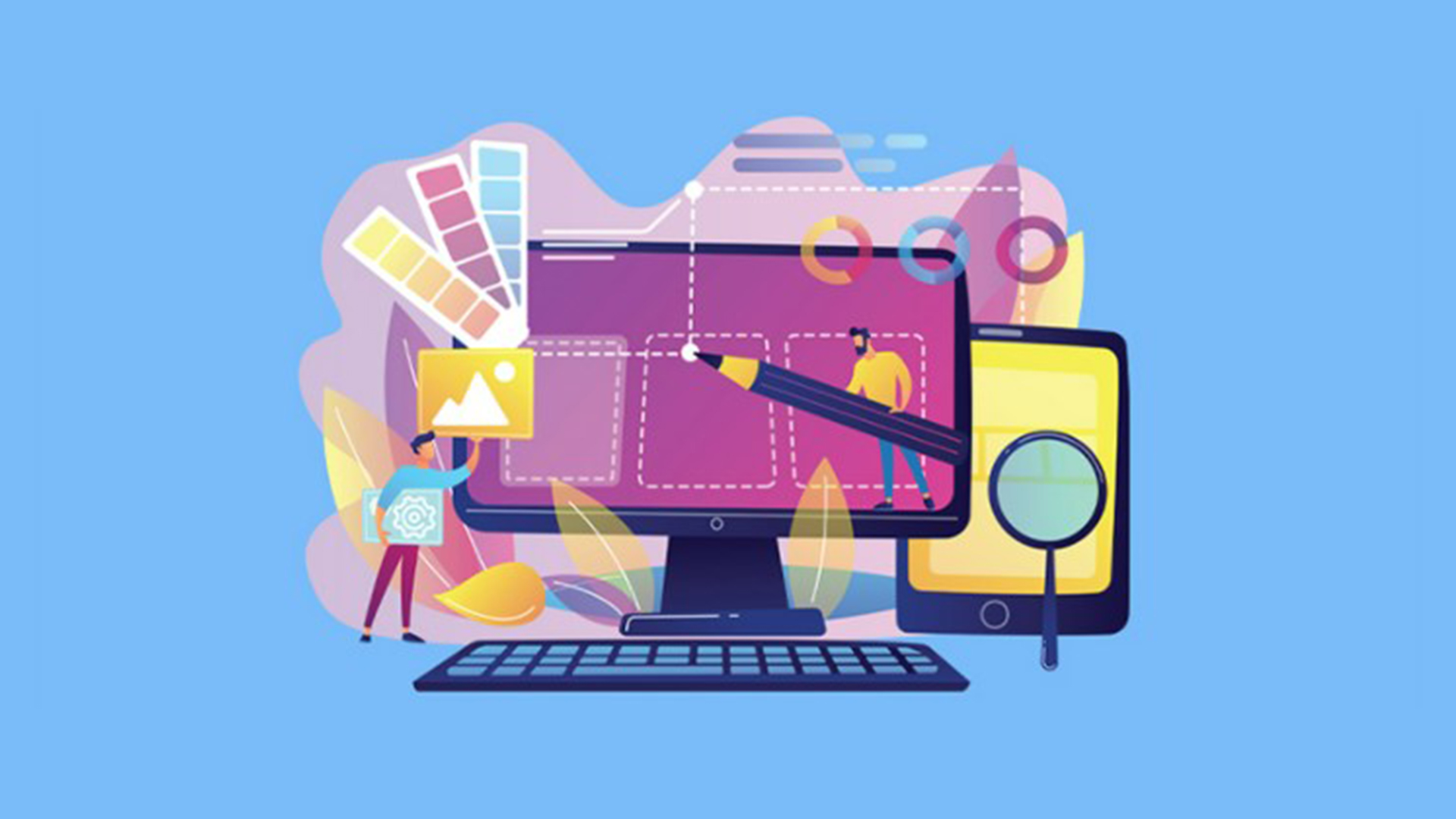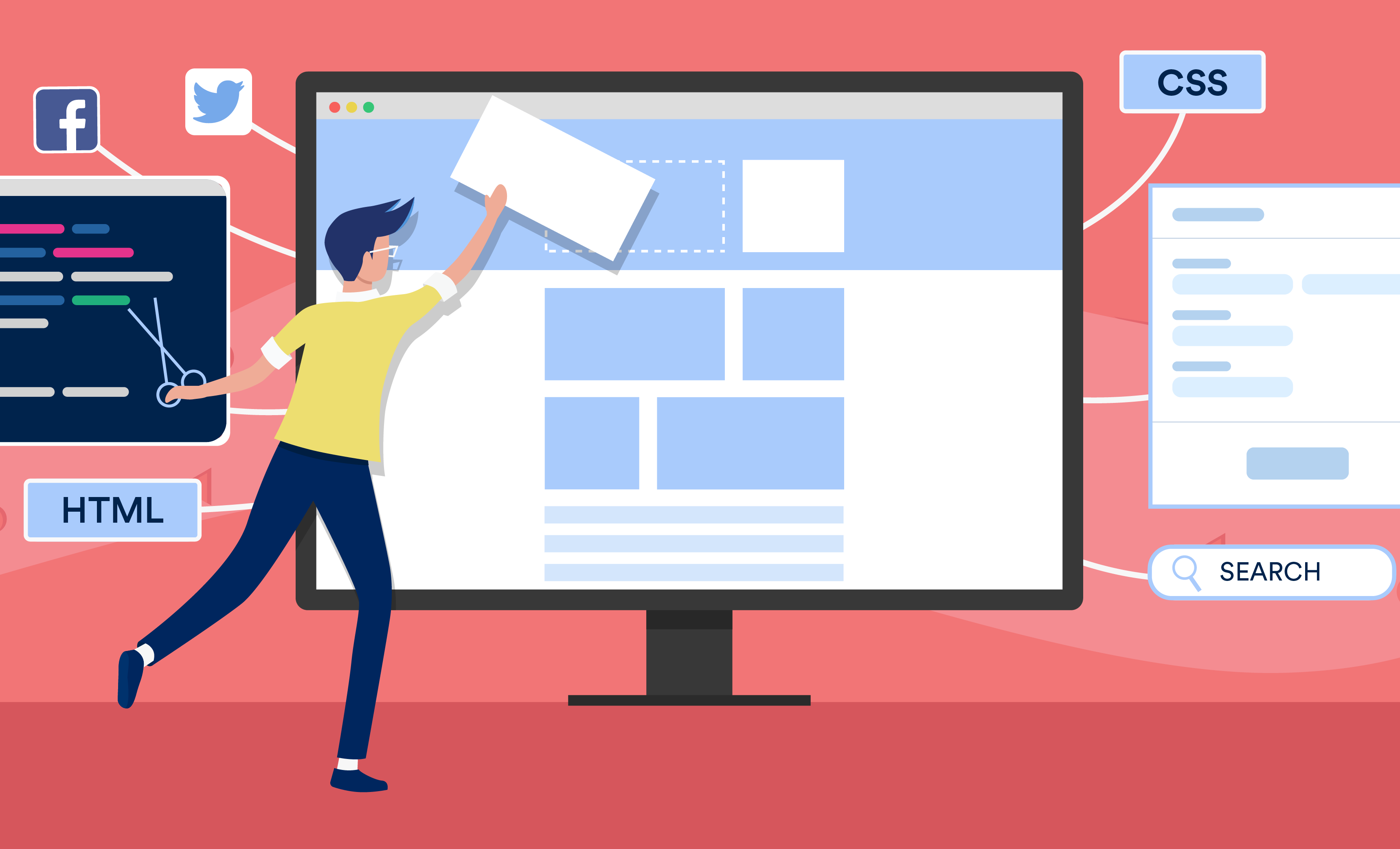All Categories
Featured
Table of Contents
- – Web Design And Applications - W3c Tips and Tri...
- – Boxcar Studio - Wordpress & Drupal Web Design...
- – Html Responsive Web Design - W3schools Tips a...
- – Wicky Design: Philadelphia Web Design Tips an...
- – Responsive Web Design Certification - Freecod...
- – Web Design Company In Orlando, Florida And Ba...
- – Learn Responsive Design - Web.dev Tips and T...
- – Web Design Ledger: Homepage Tips and Tricks:
- – Why Is Web Design Important? - 6 Reasons To ...
- – Web Design And Applications - W3c Tips and T...
- – Top Web Design Agencies Ranked - 2022 Review...
Web Design And Applications - W3c Tips and Tricks:
Quick summary Usability and the energy, not the visual style, figure out the success or failure of a site. Because the visitor of the page is the only individual who clicks the mouse and therefore decides everything, user-centric design has developed as a basic method for successful and profit-oriented website design - web design frederick md.
and the energy, not the visual design, identify the success or failure of a site. Since the visitor of the page is the only individual who clicks the mouse and for that reason chooses everything, user-centric design has become a basic technique for successful and profit-oriented website design. If users can't use a feature, it may as well not exist.
g. where the search box need to be positioned) as it has currently been done in a number of posts; instead we concentrate on the approaches which, utilized appropriately, can result in more advanced style decisions and streamline the process of perceiving presented details. Please discover that you might be thinking about the usability-related short articles we have actually released prior to: Principles Of Great Site Style And Effective Web Style Guidelines, In order to use the principles properly we initially need to comprehend how users communicate with sites, how they think and what are the basic patterns of users' habits.
Boxcar Studio - Wordpress & Drupal Web Design ... - Ann Arbor Tips and Tricks:
Visitors glance at each brand-new page, scan some of the text, and click on the first link that captures their interest or slightly resembles the thing they're trying to find. There are big parts of the page they do not even look at. Most users look for something interesting (or useful) and clickable; as soon as some promising prospects are found, users click.
If a page offers users with premium content, they want to jeopardize the material with advertisements and the style of the website. This is the reason not-that-well-designed websites with top quality material gain a lot of traffic over years. Material is more vital than the design which supports it.
Users don't read, they scan. Notification how "hot" areas abrupt in the middle of sentences. This is typical for the scanning process. Very simple principle: If a site isn't able to satisfy users' expectations, then designer failed to get his task done properly and the business loses money. The higher is the cognitive load and the less intuitive is the navigation, the more willing are users to leave the website and look for options.
Html Responsive Web Design - W3schools Tips and Tricks:
Neither do they scan website in a linear style, going sequentially from one website area to another one. Rather users satisfice; they select the first sensible option. As quickly as they discover a link that looks like it may lead to the goal, there is a really excellent chance that it will be instantly clicked.
It does not matter to us if we understand how things work, as long as we can utilize them. If your audience is going to imitate you're creating signboard, then design excellent signboards." Users wish to have the ability to control their browser and depend on the consistent information discussion throughout the website.
If the navigation and site architecture aren't user-friendly, the number of question marks grows and makes it harder for users to understand how the system works and how to get from point A to point B. A clear structure, moderate visual clues and quickly recognizable links can assist users to find their course to their objective.
Wicky Design: Philadelphia Web Design Tips and Tricks:

claims to be "beyond channels, beyond products, beyond circulation". What does it indicate? Considering that users tend to check out sites according to the "F"-pattern, these three statements would be the first elements users will see on the page once it is filled. The design itself is simple and user-friendly, to comprehend what the page is about the user needs to browse for the answer.
Once you've attained this, you can interact why the system is useful and how users can benefit from it. People will not use your website if they can't discover their way around it. 2. Do Not Misuse Users' Perseverance, In every task when you are going to use your visitors some service or tool, attempt to keep your user requirements very little.
Newbie visitors want to, not filling long web kinds for an account they may never use in the future. Let users explore the website and discover your services without requiring them into sharing personal data. It's not reasonable to require users to get in an e-mail address to check the function.
Responsive Web Design Certification - Freecodecamp.org Tips and Tricks:
Stikkit is a best example for an easy to use service which requires nearly absolutely nothing from the visitor which is unobtrusive and comforting. And that's what you want your users to feel on your website. Apparently, Termite needs more. Nevertheless the registration can be performed in less than 30 seconds as the form has horizontal orientation, the user doesn't even need to scroll the page.
A user registration alone is enough of an obstacle to user navigation to minimize inbound traffic. 3. Handle To Focus Users' Attention, As sites provide both static and vibrant content, some aspects of the user interface bring in attention more than others do. Undoubtedly, images are more attractive than the text simply as the sentences marked as vibrant are more appealing than plain text.
Focusing users' attention to particular areas of the site with a moderate usage of visual elements can assist your visitors to get from point A to point B without thinking about how it in fact is supposed to be done. The less enigma visitors have, the they have and the more trust they can establish towards the company the site represents.
Web Design Company In Orlando, Florida And Bangor, Maine Tips and Tricks:
4. Pursue Function Exposure, Modern website design are usually slammed due to their technique of directing users with visually appealing 1-2-3-done-steps, large buttons with visual effects etc. From the style point of view these aspects in fact aren't a bad thing. On the contrary, such as they lead the visitors through the site content in an extremely basic and user-friendly way.
The website has 9 main navigation options which are noticeable at the first glance. What matters is that the content is well-understood and visitors feel comfortable with the method they interact with the system.
com gets straight to the point. No cute words, no overemphasized declarations. Instead a price: simply what visitors are trying to find. An optimum service for efficient writing is touse brief and succinct phrases (come to the point as rapidly as possible), usage scannable design (categorize the content, use numerous heading levels, utilize visual elements and bulleted lists which break the flow of consistent text blocks), usage plain and objective language (a promo doesn't require to seem like ad; give your users some sensible and unbiased reason they should use your service or stay on your site)6.
Learn Responsive Design - Web.dev Tips and Tricks:
Users are hardly ever on a website to enjoy the style; in addition, in most cases they are looking for the information despite the design - web design frederick md. Pursue simplicity instead of complexity. From the visitors' perspective, the finest website design is a pure text, with no advertisements or further material blocks matching precisely the inquiry visitors used or the content they've been searching for.
Finch clearly provides the details about the site and provides visitors a choice of choices without overcrowding them with unnecessary material. Not just does it help to for the visitors, but it makes it possible to perceive the information provided on the screen.
Complex structures are more difficult to read, scan, examine and deal with. If you have the option in between separating 2 style sections by a visible line or by some whitespace, it's usually much better to use the whitespace solution. (Simon's Law): the much better you handle to supply users with a sense of visual hierarchy, the much easier your content will be to view.
Web Design Ledger: Homepage Tips and Tricks:
The same conventions and rules must be applied to all elements.: do the most with the least amount of hints and visual aspects. Clarity: all elements should be designed so their significance is not uncertain.
Conventions Are Our Friends, Standard style of site aspects doesn't lead to a dull web website. As they lower the finding out curve, the requirement to figure out how things work. For instance, it would be an usability headache if all sites had various visual discussion of RSS-feeds. That's not that various from our routine life where we tend to get utilized to standard concepts of how we arrange information (folders) or do shopping (positioning of products).
understand what they're anticipating from a website navigation, text structure, search positioning etc. A case in point from functionality sessions is to translate the page in Japanese (assuming your web users do not know Japanese, e. g. with Babelfish) and provide your use testers with a task to discover something in the page of different language.
Why Is Web Design Important? - 6 Reasons To Invest In Site ... Tips and Tricks:
Steve Krug recommends that it's better to, but benefit from conventions when you don't. 10. Test Early, Test Often, This so-called TETO-principle needs to be applied to every website design task as usability tests frequently supply into significant problems and issues associated with an offered design. Test not too late, not insufficient and not for the wrong factors.
Some important points to remember: according to Steve Krug, and screening one user early in the job is better than screening 50 near completion. Accoring to Boehm's first law, mistakes are most regular throughout requirements and design activities and are the more pricey the later on they are gotten rid of.
That means that you develop something, test it, fix it and then test it again. There may be problems which haven't been discovered during the first round as users were virtually obstructed by other issues.
Web Design And Applications - W3c Tips and Tricks:

This holds for designers too. After you have actually dealt with a site for couple of weeks, you can't observe it from a fresh point of view any longer. You understand how it is developed and therefore you know exactly how it works you have the wisdom independent testers and visitors of your website would not have.
It can be connected to other areas such as graphic style, user experience, and multimedia arts, however is more appropriately seen from a technological perspective. It has ended up being a large part of people's everyday lives. It is difficult to think of the Web without animated graphics, various designs of typography, background, videos and music.

Throughout 1991 to 1993 the World Wide Web was born. Text-only pages might be seen using a basic line-mode web browser. There had been no integrated approach to graphic design aspects such as images or noises.
Top Web Design Agencies Ranked - 2022 Reviews - Clutch.co Tips and Tricks:
The W3C was created in October 1994 to "lead the World Wide Web to its full capacity by establishing typical protocols that promote its advancement and guarantee its interoperability." This dissuaded any one business from monopolizing a propriety internet browser and programming language, which could have altered the effect of the Internet as a whole.
As this has happened the innovation of the web has also moved on. There have also been substantial changes in the way people utilize and access the web, and this has changed how websites are created.
Learn more about Lovell Media Group LLC or TrainACETable of Contents
- – Web Design And Applications - W3c Tips and Tri...
- – Boxcar Studio - Wordpress & Drupal Web Design...
- – Html Responsive Web Design - W3schools Tips a...
- – Wicky Design: Philadelphia Web Design Tips an...
- – Responsive Web Design Certification - Freecod...
- – Web Design Company In Orlando, Florida And Ba...
- – Learn Responsive Design - Web.dev Tips and T...
- – Web Design Ledger: Homepage Tips and Tricks:
- – Why Is Web Design Important? - 6 Reasons To ...
- – Web Design And Applications - W3c Tips and T...
- – Top Web Design Agencies Ranked - 2022 Review...
Latest Posts
Pueblo Web Design Tips and Tricks:
10 Principles Of Good Web Design - Smashing Magazine Tips and Tricks:
Web Design Software By Xara Tips and Tricks:
More
Latest Posts
Pueblo Web Design Tips and Tricks:
10 Principles Of Good Web Design - Smashing Magazine Tips and Tricks:
Web Design Software By Xara Tips and Tricks: